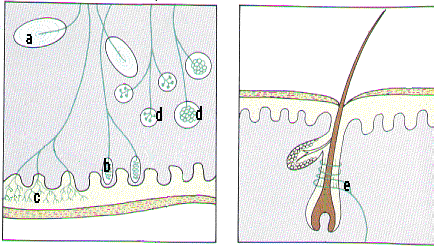Site author Richard Steane
The BioTopics website gives access to interactive resource material, developed to support the
learning and teaching of Biology at a variety of levels.
|
Site author Richard Steane
|
The BioTopics website gives access to interactive resource material, developed to support the
learning and teaching of Biology at a variety of levels.
|
|
| Sense organ | Sense/senses: | Sensitive to (factors) |
|---|---|---|
| > skin | > touch | > touch -
pressure, heat, cold |
| > tongue | > taste
|
> chemicals in food |
| > nose | > smell
|
> chemicals in air |
| > ears | > hearing
& balance |
> sounds
& gravity/movement |
| > eyes | > sight
|
> light |
